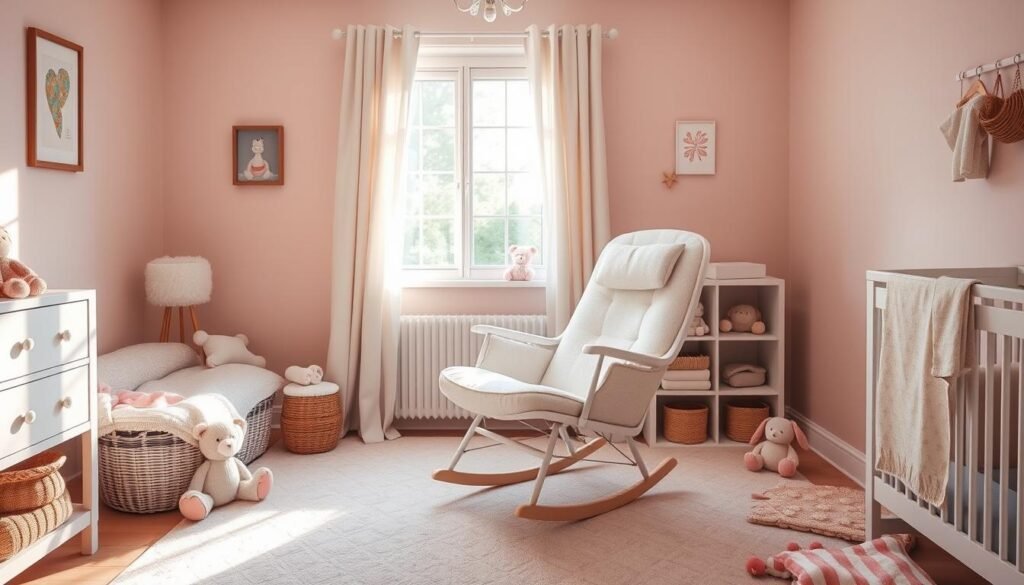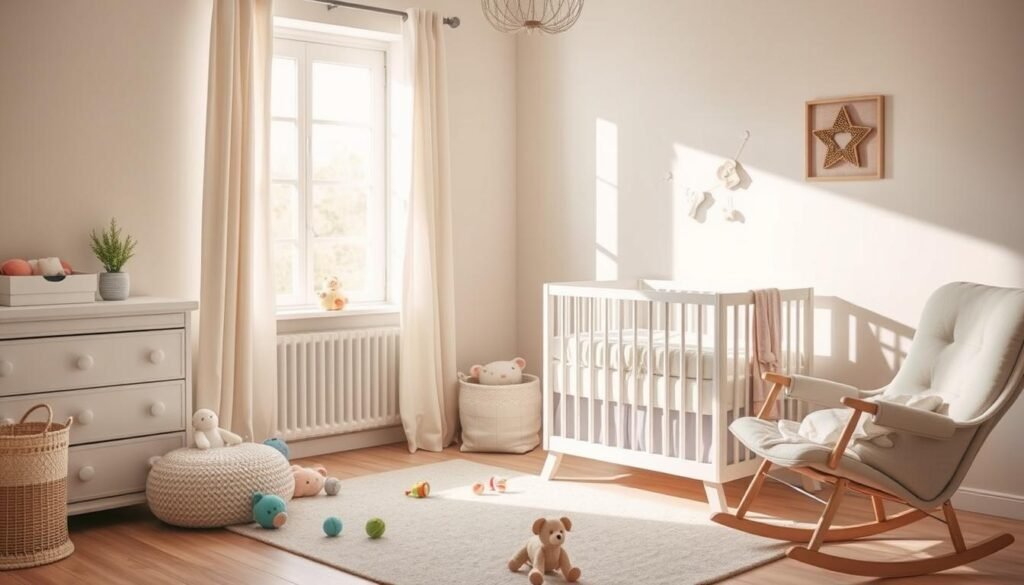Aussie parents, listen up! From November 2024, you’ll get a big boost in maternity leave payments. The government’s new scheme will offer up to $22,951 in financial support. This is to help growing families during the early stages of parenthood.
Major Highlights
- The new paid parental leave scheme offers up to $22,951 in financial support for Australian families.
- Parents can take up to 22 weeks of leave starting from July 1, 2024.
What is the New Paid Parental Leave Scheme?
The Australian government has launched a new paid parental leave scheme. It aims to support families more. This scheme offers financial help and flexibility, so parents can spend quality time with their newborns without worrying about money.
Overview of the Scheme
The scheme gives eligible parents up to $22,951 in financial help. Parents can take up to 20 weeks of leave starting from July 1, 2023. This will increase to 22 weeks in 2024, 24 in 2025, and 26 in 2026.
Two weeks of leave are set aside for the second parent in 2023-24 and 2024-25. This will grow to at least three weeks in 2025 and four weeks in 2026.
The scheme brings many benefits for Australian families. It lets parents spend more time with their newborns without financial stress. It also offers flexibility, allowing parents to share leave.
This is great for families and new mothers. It helps them ease back into work smoothly.
Who Qualifies for the Leave?
To get the full 20 to 26 weeks of leave by 2026, both parents’ income must be under $350,000. If their income is over $350,000, most of the leave goes to one parent earning less than $168,865. Single parents need to earn less than $168,865 to qualify.
Parents must also pass an income test and have worked at least 10 of the 13 months before their child’s birth. There are exceptions for pregnancy-related illnesses or complications.
The government is investing $1.2 billion in the Paid Parental Leave scheme until 2026-27. It’s expected that over 180,000 families will benefit each year.
“The Prime Minister referred to this expansion as the biggest boost to Paid Parental Leave in 15 years.”
Maternity Leave
Maternity leave is for pregnant women and new mothers at work. It’s different from parental leave, which both parents can take for a newborn or adopted child. The new $22,951 paid parental leave scheme aims to support both maternity and parental leave better. It recognizes the unique needs of new parents in Australia.
Definition of Maternity Leave
Maternity leave is a time for pregnant employees to take off from work, usually around childbirth. It lets mothers recover, give birth, and bond with their baby without work stress.
Differences Between Maternity and Parental Leave
- Maternity leave is for the mother, while parental leave is for either parent.
- Maternity leave is shorter, mainly around childbirth, while parental leave is longer.
- Maternity leave covers medical needs for pregnancy and childbirth, while parental leave is for bonding with the child.
- Eligibility and entitlements vary, with maternity leave easier for those with shorter work histories.
The new paid parental leave scheme aims to close the gap between maternity and parental leave. It offers more flexibility and support for working parents in Australia. Knowing the differences helps employees understand their rights and duties during this important time.

How Much Will You Receive?
The new paid parental leave scheme in Australia offers up to $22,951 for eligible parents. This is a big jump from before, aiming to give families a lot of financial help during this important time.
Breakdown of the $22,951 Amount
The $22,951 is based on the current national minimum wage of $915.80 per week, as of July 1, 2024. Parents can get up to 22 weeks of pay at this rate, which is $20,147.60. Also, eligible working dads or partners can get an extra 2 weeks of ‘Dad and Partner Pay’ at the same rate, which is $1,831.60.
Comparison with Previous Schemes
- The old Paid Parental Leave scheme gave 18 weeks of pay at the minimum wage, which was less than the new 22 weeks.
- The ‘Dad and Partner Pay’ part, giving an extra 2 weeks of leave, is a new feature not in the old scheme.
- The total possible payout of $22,951 is a big jump from the old max of about $18,000, giving new parents much-needed financial help.
This updated paid parental leave scheme aims to make life easier for families in the early days of a child’s life. It lets parents focus on bonding and caring for their newborn without worrying about money.
“The new $22,951 paid parental leave scheme is a game-changer for Australian families, providing much-needed financial support during this critical time.”
| Scheme | Duration | Weekly Pay | Total Amount |
|---|---|---|---|
| Previous Paid Parental Leave | 18 weeks | $915.80 | $16,484.40 |
| New Paid Parental Leave | 22 weeks | $915.80 | $20,147.60 |
| Dad and Partner Pay | 2 weeks | $915.80 | $1,831.60 |
| Total New Scheme | 24 weeks | $915.80 | $22,951.00 |
Eligibility Requirements Explained
Australia’s new $22,951 paid parental leave scheme helps full-time and part-time workers, and even self-employed people. It’s important for parents to know who can get this benefit.
Full-Time vs. Part-Time Employees
Full-time workers need to have worked for 10 out of 13 months before their child’s birth or adoption. They must have worked at least 330 hours in that time. Part-time workers face the same rules but their hours are counted differently.
Conditions for Self-Employed Individuals
Self-employed Aussies can also get paid parental leave. They must have made less than $156,647 in 2021-22 or $168,865 in 2022-23 to qualify.
| Employment Status | Eligibility Requirements |
|---|---|
| Full-Time Employees |
|
| Part-Time Employees |
|
| Self-Employed Individuals |
|

Everyone, no matter their job, must meet certain rules to get the new job protection and paid family leave benefits. Knowing these rules helps Aussie parents get the support they need during this special time.
Application Process for Maternity Leave
Applying for maternity leave in Australia might seem hard, but it’s easier with the right info. The new paid parental leave scheme started on July 1, 2023. It’s important for expectant parents to know the steps.
Step-by-Step Guide
- Check if you’re eligible: Make sure you’ve worked at least 40 weeks in the last 12 months before your child’s birth or adoption.
- Get your documents ready: Collect your child’s birth certificate, recent payslips, and proof of your job status.
- Apply online or by phone: You can apply for paid parental leave on the Department of Human Services website or by calling their helpline.
- Be ready to give more info: You might need to provide more details or documents during the application.
- Keep an eye on your application: Check the status of your application and make sure you’ve given all the needed info to avoid delays.
Important Documents to Gather
- Child’s birth certificate
- Recent payslips or proof of income
- Proof of employment (e.g., employment contract, letter from employer)
- Tax file number
- Bank account details for payment
By following these steps and having your documents ready, Aussie parents can apply for maternity leave confidently. They’ll get the most out of the new paid parental leave scheme.
Duration of Maternity Leave
Australia’s new $22,951 Paid Parental Leave scheme offers 18 weeks for primary caregivers. This is a big jump from the old 12 weeks.
Standard Length of Leave
Eligible Aussie parents can now enjoy up to 18 weeks of paid maternity leave. This leave is flexible. It lets parents take time off to bond with their newborn or adopted child.
Options for Extending Leave
- Those who must stop work early due to pregnancy risks can apply for more leave. They need to show proof of job hazards.
- Parents can also add previous Parental Leave Pay or Dad and Partner Pay to their work test. This might extend their leave.
- But, a break of 12 weeks or more in the 10-month work test can make you ineligible for the scheme.
The new policy aims to support Aussie families more during this critical time. Knowing about standard leave and how to extend it helps parents plan better. It makes the transition back to work smoother.

Key Dates and Deadlines
Knowing when to apply and when benefits start is key for Aussie parents. The new $22,951 paid parental leave scheme helps plan finances and leave. It’s all about being ready for your child’s arrival.
Application Submission Timeline
The paid parental leave scheme has a clear timeline for applications. Parents should apply at least 3 months before the due date or adoption. This ensures your claim is processed in time for the leave period to start.
When Benefits Begin
After your application is approved, you’ll start getting payments about 2 weeks before your child is born or adopted. This gives your family time to get ready financially for the new addition.
Remember, you can share the benefits with your partner. This means you can split up to 20 weeks of paid parental leave. It’s a great way to make your leave work for both of you.
| Key Dates | Details |
|---|---|
| Application Deadline | At least 3 months before expected due date or adoption |
| Benefit Start Date | Approximately 2 weeks before birth or adoption |
| Maximum Paid Leave | 20 weeks, can be shared between parents |
Understanding these deadlines and timelines helps new birth leave and new mother benefits recipients. It ensures a smooth transition into parenthood and helps manage finances effectively.
Rights and Protections During Leave
The new $22,951 Paid Parental Leave scheme in Australia offers strong protections for parents. Pregnant employees are protected from unfair treatment. This includes dismissal, reduction in hours, or being overlooked for promotions.
Employees must tell their employer at least 10 weeks before starting parental leave. They must confirm their plans 4 weeks before. Many women start leave around 34-36 weeks of pregnancy.
Casual workers with 12 months of regular service can take 12 months of unpaid parental leave. They have the right to return to their previous role.
Job Security and Reinstatement
Australian employees have the right to 52 weeks of unpaid parental leave. Some employers offer more paid leave. Workers are protected from discrimination and have the same rights to a safe workplace during pregnancy and leave.
Employees usually keep their leave benefits, like sick leave and annual leave, during parental leave. Special maternity leave is available for pregnancy-related complications. This doesn’t affect the 12-month unpaid leave entitlement.
Protections Against Discrimination
- Employers must provide a safe work environment for pregnant employees and promptly address any safety concerns.
- Detailed workplace accommodations may be required, depending on the employee’s job duties and the work environment.
- Workers have the right to return to their same position after parental leave, or a role of similar status if the original position is no longer available.
These strong maternal rights and workplace flexibility ensure Australian parents can care for their families. They can do so without fear of losing their jobs or facing discrimination.

Impact on Employer Policies
The new paid parental leave scheme in Australia will change how employers handle leave. They need to update their policies to meet the new rules. This ensures they support their employees well during this time.
What Employers Need to Know
Employers face challenges with pregnancy and return-to-work issues. They struggle with understanding their legal duties and employee rights. This is a big worry, more so for jobs that are hard physically.
Small businesses find it tough too. They lack resources, face financial limits, and struggle with managing leave. Employers want clear info on their legal duties and employee rights. They also find it hard to balance their employees’ needs with their business goals.
Adapting to the New Scheme
- Frequency of automated notifications: Using automation tools can help avoid mistakes. It sends reminders and updates on leave and return dates.
- Percentage of organizations that offer flexible parental leave: Companies should mix paid and unpaid leave with flexible work options. This meets different parental needs.
- Ratio of employees receiving training coverage: HR and managers should plan for training. This covers both regular and temporary staff for leave.
- Utilization rate of technology for parental leave process: HR can use software to streamline the leave process. This ensures all steps and approvals are done right.
- Frequency of policy evaluations: Parental leave policies need regular checks. This keeps them up-to-date and effective.
- Employee satisfaction metrics: Feedback from employees on leave helps improve policies. It boosts job satisfaction and productivity.
By focusing on these areas, employers can adjust to the new parental leave scheme. They can offer job protection and paid family leave to their Aussie employees.
Real-Life Experiences from New Parents
The new $22,951 paid parental leave scheme in Australia has started. Aussie mums and dads are sharing their stories. They talk about the scheme’s benefits and tips for going back to work.
Testimonials on the New Scheme
Christi McNeill, a Social and Digital Strategy Manager, talks about her pregnancy support. “The parental leave benefits were amazing. I felt lucky to have such flexibility and care from my company.”
Brittany Hennessy, Associate Director at Horizon Media, loves her company’s “Spring!” program. It offers coaching, video tutorials, and resources for new parents.
Tips for a Smooth Transition Back to Work
- Allyson Downey, founder of WeeSpring, says to prepare well for family leave. Create a guide for your colleagues.
- Lisen Stromberg’s survey shows building a strong support system is key during maternity leave.
- Kate M. Porter, a Senior Social Media Program Manager, recommends flexible work options. This can make going back to work easier.
These new parents’ stories show the value of employer benefits and a supportive work culture. Their experiences can guide other Aussie families through parental leave.

Future of Parental Leave Policies
Australia’s new $22,951 paid parental leave scheme is now in effect. This change aims to support parents, mainly mothers, by increasing leave from 20 to 26 weeks by 2026. But, this change raises questions about balancing work, equality, and health.
Potential Changes on the Horizon
There’s a big gap in who takes parental leave. In 2019–20, 171,000 mothers took leave, while 92,000 fathers/partners did. Income, stigma, and gender norms are big barriers. Groups are pushing for more dads to take part in childcare.
Parents also want 4 weeks of leave together at a child’s birth. Now, dads can take up to 2 weeks, but not with employer-paid leave. Making this period longer could help equality and support new parents.
Advocacy for Expanded Benefits
The move to 26 weeks of leave by 2026 is a step up. But, some say Australia is behind many OECD countries in leave time. Research shows young Australians want equal work and care, with 52 weeks of paid leave preferred. Advocates are working for more leave to meet modern family needs.
The government is investing $531.6 million to improve the Paid Parental Leave (PPL) scheme. As policies evolve, maternal rights and workplace flexibility will keep being discussed.

“Paid parental leave policies are key to sharing unpaid care fairly between men and women.”
Additional Resources for Parents
As you explore the new paid parental leave scheme in Australia, many resources are here to help. The Australian Government’s Starting Blocks website (StartingBlocks.gov.au) is a great place to start. It has lots of info on childcare, who can get benefits, and how to apply.
If you’re eligible for Parental Leave Pay before July 1, 2023, you can get up to 18 weeks of pay and 2 weeks of Dad and Partner pay. After July 1, 2023, the new scheme might offer up to 100 days or 20 weeks of leave. It’s important to know what you’re entitled to and how to get it.
There are also many support groups and organizations in Australia for new and expectant parents. You can find local parenting networks, childcare providers, and community services. They can offer valuable advice and support as you start your parenting journey.
